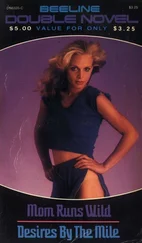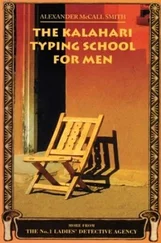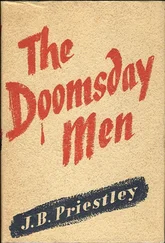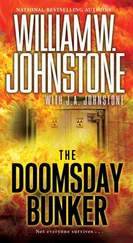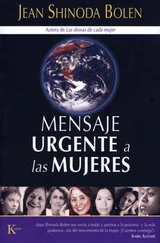On 16 March 1903, a few months before Rutherford’s visit to Paris, the true ‘mystery of radium’, as the London Times called it, suddenly dawned on the world. Pierre Curie informed the French Academy of Sciences that pure radium chloride was always 1.5°C warmer than its surroundings. This happened ‘without combustion, without chemical change of any kind, and without any change in its molecular structure’. 47Radium could melt more than its own weight of ice every hour. It was astounding news. According to Marie Curie, it ‘defied all contemporary scientific experience’. 48And, for the first time, atomic energy had been described in terms of heat to a non-scientific audience.
People had heard about radium’s extraordinary rays. Indeed three days later, Sir William Crookes gave what The Times said was a ‘beautiful demonstration’ of radium rays to the Royal Society. Using a screen of zinc sulphide, he revealed the brilliant phosphorescence that occurs when it is placed near radium: ‘Viewed through a magnifying glass, the sensitive screen is seen to be the object of a veritable bombardment by particles of infinite minuteness, which, themselves invisible, make known their arrival on the screen by flashes of light, just as a shell coming from the blue announces itself by an explosion.’ 49
But Pierre Curie’s announcement revealed ‘forces of a totally different order of magnitude’. The Times told its readers: ‘Apparently we have in radium a substance having the power to gather up and convert into heat some form of ambient energy with which we are not yet acquainted.’ 50Although dreams of perpetual motion (like Tripler’s) were ruled out by the newspaper, the mysterious source of the energy seemed to be challenging the laws of thermodynamics, those fundamental principles of nineteenth-century physics that were carved in stone on the tablets of science. The world stood on the brink of a ‘new wonderland’ of science. As the respected Edinburgh Review put it:
A Crookes tube does not produce X-rays unless we pass a current through it; a lamp gives no light unless we keep it supplied with oil: but uranium and radium continue to give out Becquerel rays day after day and year after year, with no outside stimulus of any kind, and with an intensity that shows no measurable diminution… What is the source of the energy of their rays? 51
A few weeks after Pierre Curie’s announcement, Soddy wrote an article summarizing recent advances in radioactivity. Significantly, he said that people now had to think of matter ‘not only as mass, but also as a store of energy’. Soddy was writing two years before Albert Einstein began to consider the equivalence of matter and energy. The amounts of energy in matter were ‘colossal’, said Soddy. Together with Rutherford, he had made a rough estimate: ‘The energy of radioactive change must therefore be at least twenty-thousand times, and may be a million times, as great as the energy of any molecular change.’ 52
The potential energy locked up within matter and slowly released in the radioactive glow of radium was indeed colossal. To illustrate this idea of matter as energy, Soddy then used an extraordinary image. From now on people should, he said, ‘regard the planet on which we live rather as a storehouse stuffed with explosives, inconceivably more powerful than any we know of, and possibly only awaiting a suitable detonator to cause the earth to revert to chaos’. 53
In February that year, Sir William Crookes had vividly depicted the amount of potential energy in radium by saying just one gram could raise the entire fleet of the British Navy several thousand feet into the sky. Newspapers duly provided graphic illustrations showing the pride of the Admiralty hoisted unceremoniously into mid-air. Soddy was in Boston at the time this story broke in the American press. He mentioned it in a letter to Rutherford, saying that Sir William had been misunderstood as saying a gram of radium could ‘blow the British Navy sky high’. 54Sir William had been merely trying to depict the potential energy, not conjure up a superweapon. But as nuclear historian Spencer Weart has said, ‘scientist, press, and public had together crafted a new thought’. 55It wasn’t that far short of the truth.
In France, Gustave Le Bon, a science writer who knew the publicity value of dramatic predictions, told a newspaper that it would not be long before a scientist invented a radioactive device to ‘blow up the whole earth’. 56Even the innately cautious Rutherford echoed Soddy’s notion, ‘playfully’ suggesting to a friend that with the ‘proper detonator… an explosive wave of atomic disintegration might be started through all matter which would transmute the whole mass of the globe into helium or similar gases, and, in very truth, leave not one stone upon another’. It might have been a casual remark between friends, but it was too good not to print, and it duly appeared in January 1904. 57
In the same month as this frightening prospect was reported, Frederick Soddy gave a lecture to a military audience on the latest advances in radioactivity. Unlike Rutherford, Soddy was not afraid of looking into the future and speculating publicly about the applications of pure science. Today he would tempt fate. Whoever cracked the secret of atomic energy, he said, ‘would possess a weapon by which he could destroy the earth if he chose’. 58The idea of the atomic chain reaction had been born and with it a scenario that would have quickened the heartbeat of Dr Strangelove himself: an atomic doomsday bomb.
At the end of 1903, Marie and Pierre Curie learned that they, together with Henri Becquerel, had won the Nobel Prize in Physics. Pierre was a man who could not be flattered by honours. He did not visit Stockholm to collect the award for two years. Both Marie and Pierre were feeling the effects of radiation poisoning: his legs shook and he suffered unexplained pains. Both of them struggled against fatigue.
In his Nobel lecture, which he finally delivered in 1905, a year before his tragic death in a street accident, Pierre returned to the subject he had raised at the dinner party with Rutherford and his wife. He spoke of his fears ‘that radium could become very dangerous in criminal hands’. Pierre implicitly compared himself to Alfred Nobel who, as well as establishing the Nobel awards just four years previously, had also invented dynamite and hoped thereby to end war. Powerful explosives may have ‘enabled man to do wonderful work’, said Pierre, but they are also ‘a terrible means of destruction in the hands of great criminals who are leading the peoples towards war’.
Pierre’s words were dignified and far from sensational, but his concerns were clear. He acknowledged that more good than harm came from scientific discovery. But he left his distinguished audience – gathered together to celebrate the achievements of science – with a distinct sense of unease about the future. As they set out on a journey of discovery that could yield unimaginable power, it was right, he said, that they should ask ‘whether mankind benefits from knowing the secrets of Nature’. 59It was a question that would echo down through the twentieth century.
At the beginning of 1904, a reporter from the Strand Magazine arrived in Paris to interview the discoverers of radium. Cleveland Moffett, a writer of mystery stories including a minor classic, ‘The Mysterious Card’, 60met Pierre Curie in ‘one of the rambling sheds’ at the Ecole de Physique et de Chimie Industrielles where he and Marie had isolated radium and polonium. 61
When he first saw Pierre, the ‘tall, pale man, slightly bent’ was intently watching ‘a small porcelain dish, where a colourless liquid was simmering’. This was the painstaking chemistry of refining radium by crystallization. The pure metal had still not been isolated, Pierre Curie told the reporter. What they were now trying to obtain was radium chloride: ‘small white crystals, which may be crushed into a white powder, and which look like ordinary salt’. 62
Читать дальше


